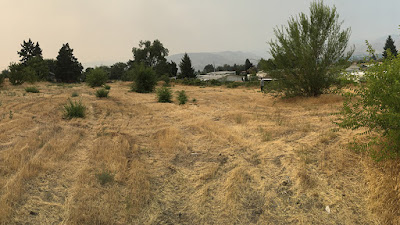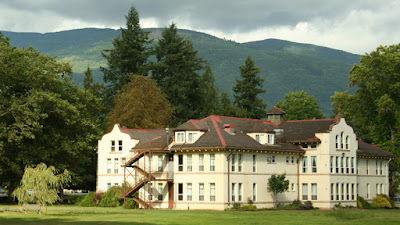 |
| Cleaning up Central
Waterfront site is transforming Bellingham Bay |
Stroll along the Bellingham waterfront today and you’ll see
changes – a
new public park with an award-winning
restored beach, a restored Granary Building,
and a new downtown city block complete with new
roads, sidewalks, and bike paths.
All of these changes were made possible by first addressing
contamination from a history of industrial activity.
Contamination cleanup work
continues at multiple
sites along the Bellingham waterfront, which will foster more
changes over the coming years. One of
those sites is the Central Waterfront site.
 |
| An aerial view of Central Waterfront
site |
Center of it all
The Central Waterfront site is
located on the waterfront between two waterways. Four other Ecology cleanup
sites are in the area: two in-water sediment sites (Whatcom Waterway and I & J
Waterway) and two upland sites (Georgia-Pacific
West and the Holly Street
Landfill).
“Win-Win” outreach partnerships
RE Sources for
Sustainable Communities
hosted a walking tour of the Central Waterfront site on July 10. They shared information about cleanup
activities and connected the community with agency staff managing the cleanup efforts.
On this rainy, overcast July weekday, about 40 curious folks joined RE Sources,
Ecology, the Port of Bellingham, and City of Bellingham as we all toured the
site. We saw the working waterfront in action, learned of previous cleanup
work, and discussed planned cleanup work.
We award Public
Participation Grants to individuals and nonprofit organizations
like RE Sources who do outreach about contaminated sites. They received a grant
starting July 1 and hit the ground running just days later with a Central
Waterfront site tour. Opportunities like this enable the community to see a
cleanup site in person while having conversations with the people managing a
cleanup. It’s a “win-win” – for us, other agencies and organizations, and
most importantly for the community.
 |
| Our Public Participation Grants allow communities groups to do outreach, like providing tours of cleanup sites on Bellingham Bay. |
Future generations
We were lucky to have many
youth join in the tour conversation. It served as a perfect reminder of why we
do such cleanups, for current AND
future generations.
Our
youngest tour members innocently asked how they could help clean up the site
while we walked. A great reminder to keep an eye out for litter while we
work to address the chemical contamination.
A middle school group studying
environmental and social justice in their summer program also attended the tour
and learned how cleanups involve an entire community.
Public participation
Washington’s environmental
cleanup law, the Model Toxics Control Action (MTCA),
began as a public-initiated law and it turns
30 this year. Many steps of the MTCA cleanup process involve public
participation. Your comments help inform Ecology’s management decisions.
Ecology invites you to review
and comment on a draft Cleanup Action Plan and associated documents for the
Central Waterfront site. The plan calls for a combination of removing and
capping contaminated soil, monitoring conditions, and restricting uses.
During our first 30-day
comment period, we received several requests for a public meeting, so we’ve
scheduled a meeting for 6-8 p.m. on September 18 at Bellingham Technology
Development Center, 1000 F St., Bellingham. See this map for directions.
You can submit
comments online during our second 30-day comment period from September
16 – October 15, 2019.
By Ian Fawley, Community
Outreach and Environmental Education Specialist, Toxics Cleanup Program




